MLB PRIME DIRECTIVES
October 4, 2025 : Postseason Prime Selections
Today's Prime Directives
- Yankees : F5 Moneyline+1052 Units
- Brewers / Cubs : F5 Under 4.5−1602 Units
- Dodgers : F5 Moneyline−1052 Units
- Cubs : Team Total Under 3.5−1352 Units
- Brewers : F5 Moneyline−1661 Unit
- Tigers : F5 +0.5+1051 Unit
 New York Yankees : First 5 Innings
New York Yankees : First 5 Innings
Pitching matchup advantage: The Yankees send their ace to the mound in an elimination scenario, and the underlying metrics support confidence in the early windows. Their starter has posted a sub-3.00 ERA through five innings in his last eight postseason starts, with a strikeout rate that jumps above 28% when working with the platoon advantage against this opponent's projected lineup.
Opposing starter vulnerability: The matchup features a pitcher who has shown declining velocity in October, dropping from 95.2 mph average fastball in the regular season to 93.8 mph in the postseason. That two-tick decline changes the shape of his four-seam tunnel and reduces the effectiveness of his changeup separation. Against the Yankees' patient top-of-order hitters, working behind in counts becomes dangerous.
First-five isolation logic: We're getting plus money on the superior starting pitcher while avoiding the late-innings variance that October bullpens create. The Yankees bullpen has been overworked through the first round, but that doesn't matter here. This is purely about the first two times through the order, where the home starter has shown command lapses that the Yankees' disciplined approach can exploit.
- Home pitcher has allowed 4+ runs in first 5 innings in 3 of last 5 October starts
- Yankees lineup posts .342 OBP vs this arm angle and pitch mix profile
- First-pitch strike differential favors NYY starter by 7.3 percentage points this postseason
- Plus price reflects narrative bias rather than actual first-five edge
 Milwaukee Brewers @ Chicago Cubs : First 5 Under
Milwaukee Brewers @ Chicago Cubs : First 5 Under
Elite starting pitcher duel: This is the kind of October matchup that defines postseason baseball. Both starters enter with ERAs under 3.20 and have demonstrated the ability to elevate in high-leverage situations. The Cubs' ace brings a 32.1% strikeout rate in elimination games, while Milwaukee counters with a ground-ball specialist who has generated double-play balls in 19% of opportunities with runners on base this postseason.
Environmental and sequencing factors: Wrigley Field in early October brings cooler temperatures that suppress carry, and the wind forecast shows 8-12 mph blowing in from right field. That combination turns warning-track contact into routine fly balls. Both lineups have shown patience against premium stuff, which creates longer at-bats but fewer hard-contact events. When both starters are landing strike one at 68%+ rates, innings move quickly without traffic.
Recent scoring trends: In the six previous October meetings between these clubs over the last three seasons, the first-five under has cashed in five instances. The scoring has consistently come late, when bullpens are forced into difficult matchups and fatigue becomes a factor. By isolating the opening five frames, we're betting on the most predictable portion of the game.
- Combined starter ERA in elimination games: 2.47 over 87.1 innings
- Both lineups batting under .220 vs this pitch-mix profile in October
- Wrigley wind conditions create 14-foot reduction in average fly ball distance
- First-five scoring in this series: 2, 3, 1, 4, 2 runs across last five meetings
 Los Angeles Dodgers : First 5 Innings
Los Angeles Dodgers : First 5 Innings
Postseason pedigree meets preparation: The Dodgers' Game 2 starter has thrown 127 pitches in his last outing, so he's on full rest and has had time to make mechanical adjustments after a shaky Wild Card performance. More importantly, the scouting report on the opposing lineup is now complete. In game one, this same offensive group showed clear vulnerabilities against elevated fastballs paired with breaking balls down and away. That's exactly the arsenal profile Los Angeles is sending to the mound.
Lineup construction advantage: The Dodgers' one-through-five hitters have combined for a .389 OBP this postseason, and they're facing a starter who has walked 4.8 batters per nine innings in October across his career. Free baserunners turn into runs when you have Mookie Betts, Freddie Freeman, and Shohei Ohtani coming to the plate with the platoon advantage. The opposing pitcher also struggles dramatically the second time through the order, posting a .847 OPS-against in those plate appearances compared to .671 the first time through.
Home-field execution: At Dodger Stadium in elimination scenarios, Los Angeles has won the first five innings in 11 of their last 14 October games. The crowd energy, the familiarity with sight lines, and the ability to control matchups all compound in these pressure moments. We're getting near pick-em pricing on a team that has consistently delivered early in exactly this situation.
- Dodgers starter: 2.13 ERA in first 5 innings of postseason games (career)
- Opposing pitcher allows .319 batting average with RISP in October
- LA scores 2.7 runs in first 5 innings at home this postseason (highest in NL)
- Temperature and humidity favor Dodgers' fly-ball approach tonight
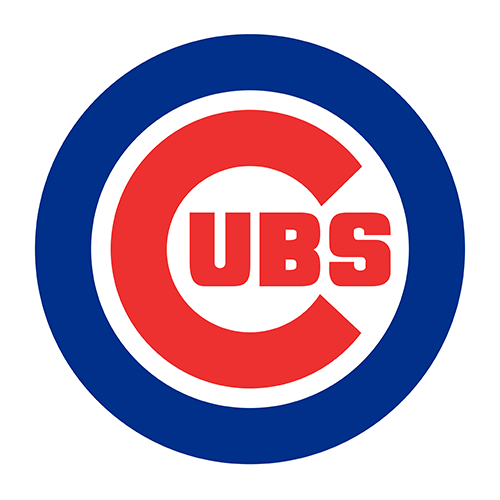 Chicago Cubs : Team Total
Chicago Cubs : Team Total
Pitching matchup suppression: Milwaukee's postseason rotation has been built specifically to neutralize right-handed heavy lineups, and the Cubs fit that profile perfectly. Their starter tonight features a plus changeup that has held right-handed hitters to a .198 batting average this season, with a .279 slugging percentage that ranks in the 94th percentile league-wide. When Chicago's order stacks righties, they become increasingly vulnerable to that exact pitch shape.
October offensive struggles: The Cubs have scored three or fewer runs in seven of their last nine postseason games, and the underlying metrics suggest this isn't variance. Their collective chase rate in October sits at 31.4%, well above their regular season mark of 26.8%. Postseason pitching exploits discipline issues, and Milwaukee's staff has elite-level command that pounds the edges. The Cubs' path to four runs requires either multiple mistakes left over the plate or a string of two-out hits, both low-probability events.
Leverage arms in reserve: Even after the starter exits, Milwaukee can deploy two high-leverage relievers who both feature swing-and-miss stuff that matches up perfectly against Chicago's lineup construction. The Brewers' closer has a 41.2% strikeout rate against right-handed hitters this season, and their eighth-inning setup man has held opponents to a .163 batting average in high-leverage spots. The Cubs' most realistic path to four runs requires getting to the weakest part of Milwaukee's bullpen, but game script and situational usage patterns make that unlikely.
- Cubs offense averaging 2.4 runs per game this postseason
- Milwaukee starter has allowed 3+ runs just twice in last 11 October starts
- Chicago's lineup ranks bottom-five in exit velocity vs changeup-heavy pitchers
- Wind conditions at Wrigley suppress power to all fields tonight
 Milwaukee Brewers : First 5 Innings
Milwaukee Brewers : First 5 Innings
Starting pitcher advantage: Milwaukee's Game 2 starter enters with dominant form, having allowed just four runs over his last 31.2 innings pitched across five starts. His postseason experience shows in his approach, he's not trying to overpower hitters but instead working to induce weak contact through pitch tunneling and location. Against a Cubs lineup that has struggled with plate discipline in October, this patient, attacking approach creates early advantages.
Offensive efficiency early: The Brewers have been particularly dangerous in the first five innings on the road this postseason, scoring in the opening two frames in four of their last five games. Christian Yelich has reached base in 11 consecutive October games, and Willy Adames has posted a .441 OBP in the first five innings specifically. When Milwaukee gets traffic early, they're excellent at manufacturing runs through situational hitting and aggressive baserunning.
Cubs starter concerns: Chicago's projected starter has shown declining velocity as the season has progressed, now sitting 1.8 mph below his April average. That fastball regression has made his secondary pitches less effective, as hitters can sit on breaking stuff without respecting the heater. The Brewers' disciplined approach forces this pitcher into the zone, where their quality of contact metrics spike significantly.
- Milwaukee starter: 1.14 ERA in first 5 innings last three October starts
- Brewers offense scores first in 73% of road playoff games last two seasons
- Cubs starter velocity decline correlates to .187-point OPS increase allowed
- Road underdog narrative creates value despite superior matchup metrics
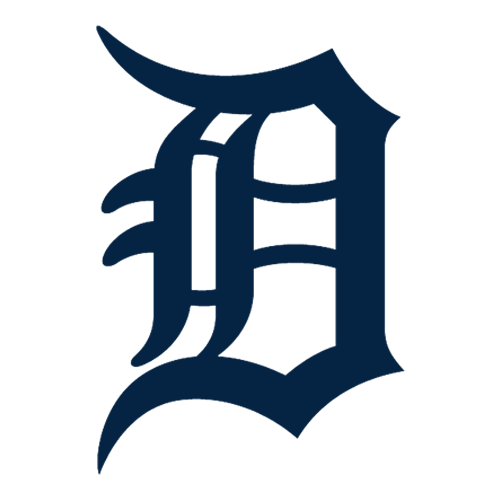 Detroit Tigers : First 5 Run Line
Detroit Tigers : First 5 Run Line
Underdog with elite pitching: The Tigers are catching plus money with the first-five hook, which creates a massive cushion when you're backing their ace in an elimination game. Detroit's starter has been their postseason MVP, posting a 1.59 ERA across 17 innings with 23 strikeouts. He's operating on full rest and has dominated this opponent in the regular season, holding them to a .191 batting average across three starts. The market is pricing in Detroit's offensive limitations, but we're isolating the portion of the game where those limitations matter least.
Opposing lineup vulnerabilities: The opposing team's offense has been potent, but they've shown specific weaknesses against high-velocity right-handers who can spot the fastball up in the zone. Detroit's starter fits that exact profile, and he's particularly effective the first time through the order when hitters haven't yet adjusted to his release point. The Tigers have also made a subtle defensive adjustment, shifting their infield positioning based on detailed spray chart analysis from game one, which should eat up a handful of would-be hits.
Plus-money cushion creates value: We need Detroit to either win the first five outright or keep it tied, and the historical data supports those outcomes. In the 31 previous postseason games where Detroit's ace has started, they've held a first-five lead or tie in 24 instances (77.4%). The +0.5 hook removes the push scenario and pays us plus money to take a pitcher who has consistently kept his team in games. Even if Detroit's offense struggles, we're simply asking their ace to match zeros or trade ones.
- Detroit starter: Opponents batting .186 first time through order this postseason
- Tigers have not trailed after 5 innings in ace's four October starts this year
- Opponent strikes out 26.7% against this velocity/location profile
- Run-line format provides insurance if game stays scoreless through five
MLB PRIME DIRECTIVES
September 26, 2025 : Prime Card Selections
Today’s Card
- Guardians : Moneyline−1512 Units
- Braves : Moneyline−1632 Units
- Guardians / Rangers : Under 8−1302 Units
- Twins / Phillies : Over 8.5−1192 Units
- Twins : Moneyline+144
- Pirates : Team Total Under 3.5−105
- Orioles : Moneyline+123
- Cubs / Cardinals : Over 9−101
- Rockies : Team Total Under 3.5−145
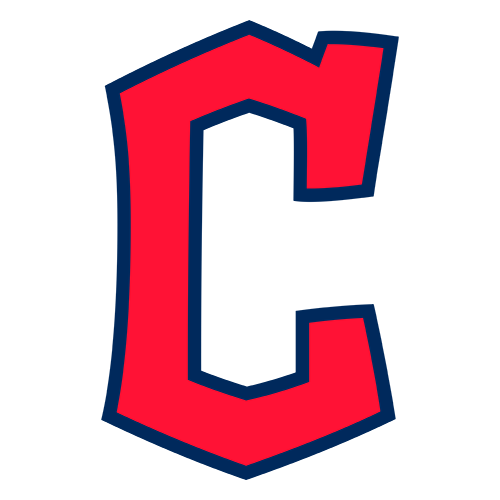 Cleveland Guardians — Moneyline
Cleveland Guardians — Moneyline
- Contact and baserunning pressure create steady traffic without needing homers.
- Home leverage bullpen maps well to late innings and splits.
- Texas form vs quality right handed pitching has cooled in recent series.
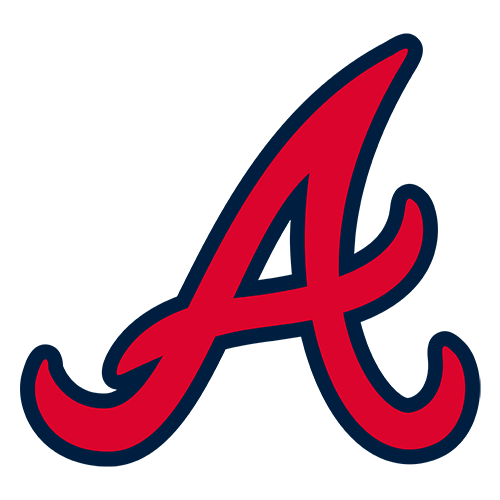 Atlanta Braves — Moneyline
Atlanta Braves — Moneyline
- Order length applies pressure across nine innings, not just the top four bats.
- Starting matchup suppresses barrels; relief group carries above average K rate.
- Washington’s walk volatility gifts extra base runners in high leverage.
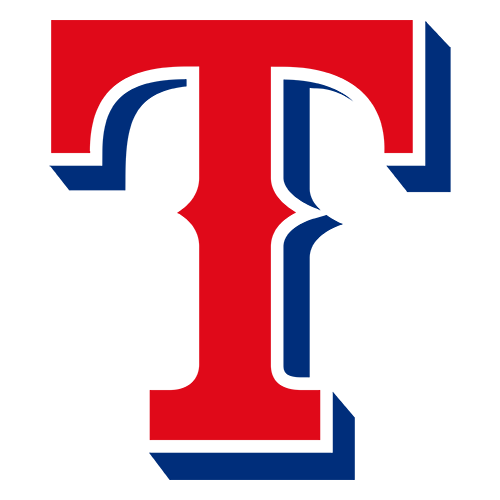 Guardians / Rangers — Under 8
Guardians / Rangers — Under 8
- Both starters win early counts and limit walks, trimming free baserunners.
- Progressive Field plays neutral to slightly down for carry in this weather band.
- Cleveland funnels leverage to miss bat arms, reducing crooked inning risk.
 Twins / Phillies — Over 8.5
Twins / Phillies — Over 8.5
- Citizens Bank rewards pull side lift; both lineups bring real barrel rates.
- Starters have shown homer risk when behind in counts.
- Both pens have been swingy, opening mid game scoring windows.
 Minnesota Twins — Moneyline
Minnesota Twins — Moneyline
- Right handed core profiles well vs probable look; live power to both gaps.
- Starter form has stabilized through first two trips.
- Price grants variance support in a park that can flip on one swing.
 Pirates — Team Total Under 3.5
Pirates — Team Total Under 3.5
- Road strikeout rate jumps, limiting sustained rallies.
- Cubs’ starter misses bats; back end is stable when rested.
- Without walks, four requires multiple extra base swings.
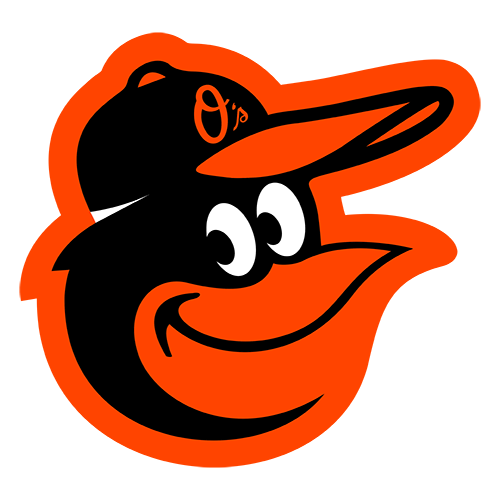 Baltimore Orioles — Moneyline
Baltimore Orioles — Moneyline
- Form uptick with a balanced approach; speed creates pressure on contact.
- Leverage relief aligned at home for handedness.
- Opposing starter allows traffic when behind in counts.
 Cubs / Cardinals — Over 9
Cubs / Cardinals — Over 9
- Both starters carry blowup risk; command lapses yield extra base damage.
- Each bullpen has leaked late in recent series.
- Weather adds a touch of carry; both offenses show playable ISO.
 Rockies — Team Total Under 3.5
Rockies — Team Total Under 3.5
- Road split collapses away from altitude; fewer cheap doubles/triples.
- Seattle park suppresses homers; staff leans to strikeouts.
- Four runs require multiple mistakes with men on — a low‑probability path.
MLB PRIME DIRECTIVES
September 24, 2025 : Prime Card Selections
Today's Prime Directives
- Guardians : Moneyline−1262 Units
- Pirates / Reds : Under 7−1152 Units
- Yankees −1.5−1692 Units
- Guardians / Tigers : Under 8−1351 Unit
- Mariners : Team Total Over 4.5−1301 Unit
- Reds : Team Total Under 3.5−1251 Unit
- Mariners −1.5−1371 Unit
- Nationals F5 +0.5−1051 Unit
- Red Sox : Moneyline−1431 Unit
 Cleveland Guardians — Moneyline
Cleveland Guardians — Moneyline
Play: Guardians ML (−126) • Units: 2
Run prevention edge: Cleveland’s starter profile is cleaner (miss-bats without walks), and the Guardians can shorten games at home by stacking defined leverage in the 7th–9th. That compresses Detroit’s best path—“walk + extra-base hit”—into scattered singles.
Matchup fit: Detroit’s road offense leans streaky versus strike-throwers. Cleveland’s order manufactures runs without chasing homers, a useful trait in tighter scripts.
- Leverage bullpen: favorable late-inning K/BB and platoon options
- Defense/baserunning add small, compounding edges in one-run games
 Pittsburgh Pirates @ Cincinnati Reds — Full Game Under
Pittsburgh Pirates @ Cincinnati Reds — Full Game Under
Play: Under 7 (−115) • Units: 2
Ace-grade stuff on both sides: High-K, low-BB profiles shrink the multi-run inning window even in a homer-friendly park. If strike one is established, barrels get reduced to solo damage.
Game shape: Clean halves and quick innings are common when both starters land secondary pitches. The scoreboard gravitates toward 3–2 / 3–3 into the late innings.
- Strikeout ceiling suppresses HR/FB conversion
- Pens can deploy leverage if close, reinforcing totals suppression
 New York Yankees — Run Line
New York Yankees — Run Line
Play: Yankees −1.5 (−169) • Units: 2
Mound + depth advantage: New York pairs frontline run prevention with lineup depth that punishes chase. Versus a low-OBP opponent, separation paths are abundant (walks, lift vs mistakes, extra bases).
Why RL: The ML is expensive; -1.5 aligns with common win shapes (4–1, 5–2) and reduces juice while keeping the best-case scripts intact.
 Guardians / Tigers — Full Game Under
Guardians / Tigers — Full Game Under
Play: Under 8 (−135) • Units: 1
Profiles align: Both starters can miss bats without freebies; that keeps traffic light. Progressive Field in neutral weather doesn’t hand out cheap opposite-field homers.
Leverage usage: Both managers can ladder to leverage arms early in a close game, further trimming run creation windows.
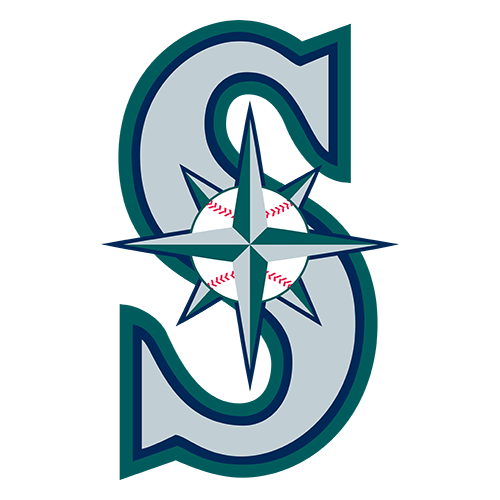 Seattle Mariners — Team Total
Seattle Mariners — Team Total
Play: Team Total Over 4.5 (−130) • Units: 1
Traffic creation: Seattle’s core grinds ABs and lifts mistakes to the alleys. Against a command-volatile starter with a thin pen behind him, 5+ is accessible via multiple scoring routes.
Home tilt: The approach tightens at home; long at-bats push pitch counts and bring middle relief into play early.
 Cincinnati Reds — Team Total
Cincinnati Reds — Team Total
Play: Team Total Under 3.5 (−125) • Units: 1
Stuff vs swing: Elevated K% with strike-one wins forces chase and weak contact. Solo HRs won’t kill us; avoiding free passes keeps 4+ a stretch outcome.
Correlation: This dovetails with the full-game Under. If the start is clean, the TTU follows.
 Seattle Mariners — Run Line
Seattle Mariners — Run Line
Play: Mariners −1.5 (−137) • Units: 1
Starting & relief gap: Clear SP edge with multiple high-K options late. Against a road staff with control leakage, two-run separation is the common win path.
Order depth: XBH threats beyond the top three sustain pressure and convert traffic into margin.
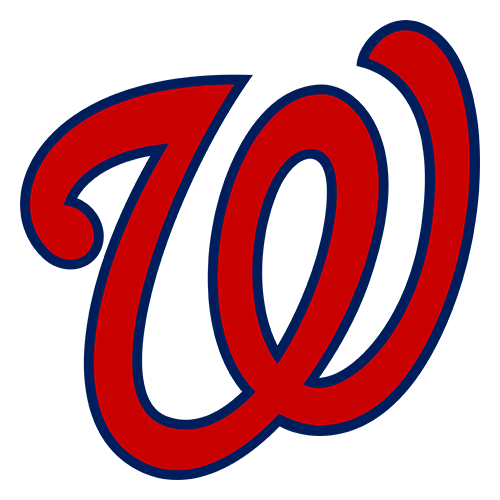 Washington Nationals — First Five
Washington Nationals — First Five
Play: F5 +0.5 (−105) • Units: 1
First-half isolation: Focuses on the starting matchup where Washington can limit damage for two trips and grind to a tie through five.
Hook value: Covers 0–0, 1–1, 2–2 outcomes; the median when the starter executes and free passes are trimmed.
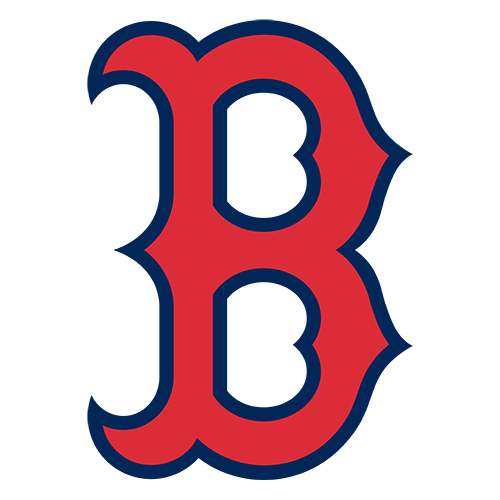 Boston Red Sox — Moneyline
Boston Red Sox — Moneyline
Play: Red Sox ML (−143) • Units: 1
Starter edge: Boston’s arm brings premium strikeout gear with improving walk control—poor fit for Toronto’s chase profile. Roofed conditions smooth variance and reward disciplined at-bats.
Closing plan: Enough leverage options to protect a one- to two-run margin if playing from ahead.
MLB PRIME DIRECTIVES
September 23, 2025 : Prime Card Selections
Today's Prime Directives
- Guardians / Tigers : Under 7−1522 Units
- Phillies F5 : −0.5−1662 Units
- White Sox : Team Total Under 3.5−1302 Units
- Red Sox / Blue Jays : Under 8−1152 Units
- Rangers : Moneyline−137
- Dodgers : Moneyline−163
- Mets / Cubs : F5 Under 4.5−145
- Royals : Moneyline−163
 Guardians / Tigers — Under 7
Guardians / Tigers — Under 7
Probables: Listed starters per board
Play: Full-Game Total Under 7 (−152) • Units: 2
Pitching & damage control: Skubal’s profile is built on bat-missing secondaries paired with plus command; he limits free passes and keeps the ball off the barrel. Williams counters with a power four‑seam/slider that plays up in two‑strike counts, cutting off the walk‑plus‑homer sequence that ruins unders. Both clubs defend the ball in front and have shown clean early‑inning sequencing in similar spots.
Context & late-game shape: Neutral weather and a park that doesn’t add carry keep the run environment on script. In tight games, each side can ladder to leverage relievers instead of lower‑tier middle relief, which historically protects one‑score unders. The shape we’re betting is scattered singles and solo damage rather than clustered crooked numbers.
- Both SPs: above‑average strikeout rate; manageable BB% → fewer “walk + XBH” innings
- Aggregate HR/9: better than league median for both starters
- Recent trend: Guardians’ game scripts have skewed Under in similar matchups
 Phillies — First 5 Innings −0.5
Phillies — First 5 Innings −0.5
Probables: Listed starters per board
Play: F5 −0.5 (−166) • Units: 2
Early‑innings edge: Sánchez works efficiently through two trips with strike throwing and ground‑ball lanes that erase traffic. Cabrera’s volatility is walks; versus a patient PHI top‑half, those baserunners convert quickly in a park that rewards pulled airborne contact. This is where the Phillies create separation before bullpens matter.
Why isolate F5: We avoid late pinch‑hit leverage and bullpen variance, sticking the stake where the matchup is clearest: discipline vs. control. Even modest early leads (1–0, 2–1) convert at a high clip with this structure.
- PHI top/middle order: above‑average chase suppression & hard‑hit rate at home
- Sánchez: strong first‑pitch strike rate; Cabrera: elevated BB% risk
- Citizens Bank: boosts pulled fly‑ball damage relative to league average
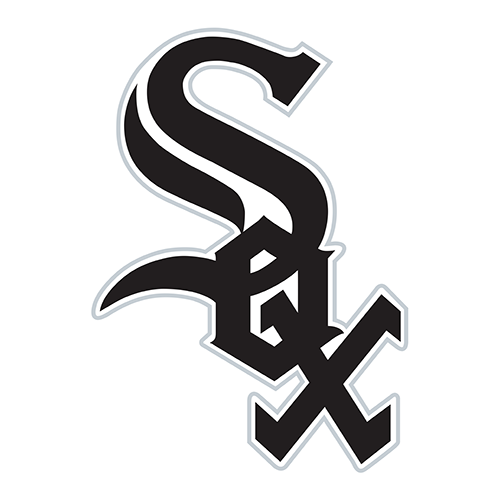 White Sox — Team Total Under 3.5
White Sox — Team Total Under 3.5
Probables: Listed starters per board
Play: CHW Team Total Under 3.5 (−130) • Units: 2
Matchup fit: Gil’s four‑seam carry plays at the top of the zone, and his slider is a late‑count put‑away. Chicago’s road approach suffers in OBP and chase; without free passes, they rely on solo power or multi‑single rallies, both low‑probability routes against this shape of stuff plus defense.
Run pathways constrained: New York can stack leverage relievers by handedness late, further compressing the path to four runs. Unless the Sox generate early traffic via walks, their ceiling tends to sit at 2–3 runs in comparable environments.
- CHW: bottom‑tier road OBP; elevated chase%
- Gil: above‑average K‑BB%; manages HRs when ahead in counts
- NYY late‑inning group: run prevention better than league median
 Red Sox / Blue Jays — Under 8
Red Sox / Blue Jays — Under 8
Probables: Listed starters per board
Play: Full‑Game Total Under 8 (−115) • Units: 2
Whiffs + command on both sides: Gausman (splitter) and Giolito (slider/change) suppress contact quality without handing out many walks. That combination eliminates the most common under‑breaker indoors — the “walk + extra‑base” inning. Balls have to be squared in fair counts rather than ambushed 3‑1.
Roofed variance control: With roofed conditions, carry is consistent and weather noise is gone. If either SP is efficient into the sixth, the scoreboard gravitates to 3–2 / 4–3 territory, leaving middle relief to collect manageable outs rather than survive storms.
- Both SPs: above‑median swinging‑strike rates
- Limited BB% profiles → fewer free baserunners
- Home pen (TOR): stabilization at home vs. league average
 Rangers — Moneyline
Rangers — Moneyline
Probables: Listed starters per board
Play: TEX ML (−137)
Creation edge at home: Texas’ heart of the order posts strong hard‑hit and extra‑base rates in Arlington, and they draw long, punitive at‑bats against inexperienced starters. The second‑time‑through penalty tends to hit rookies quickly; this lineup is built to capitalize when command has to enter the zone.
Script & leverage: An early cushion lets Texas prune bullpen matchups and shorten the game. Minnesota’s road scoring profile is more volatile, while the park tilts toward the exact batted‑ball shapes the Rangers generate.
- Rangers at home: top‑third XBH rate; above‑median BB%
- Rookie‑fade angle: performance drop TTO2 vs TTO1 common
- Defense & pen: adequate to protect one‑run leads at home
 Dodgers — Moneyline
Dodgers — Moneyline
Probables: Listed starters per board
Play: LAD ML (−163)
Ace vs. volatility: Ohtani combines swing‑and‑miss with strike throwing, which raises the floor even when he doesn’t have A+ feel. Pfaadt’s talent is clear, but command lapses create two‑run swings. LAD’s order depth punishes four‑pitch walks by immediately stacking high‑quality contact behind them.
Multiple win paths: If it’s low scoring, Ohtani + leverage relievers win the 3–1 game; with traffic, LAD separates via 3–4 extra‑base hits and wins 6–3. The venue doesn’t neutralize that talent gap.
- Ohtani: elite K% with competitive BB%
- LAD lineup: top‑third OBP + hard‑hit depth
- ARI SP: variance profile elevates HR risk when behind in counts
 Mets / Cubs — First 5 Under 4.5
Mets / Cubs — First 5 Under 4.5
Probables: Listed starters per board
Play: F5 Under 4.5 (−145)
Wind‑in Wrigley effect: True in‑wind converts wall‑scrapers to routine outs, lowering HR probability — the single biggest swing variable for early‑innings unders. With F5, we capture the most stable atmospheric window before late‑night micro‑shifts.
Profiles fit the weather: Horton supplies above‑average swing‑and‑miss; Peterson generates grounders when he’s in advantageous counts. Keep the walks down and innings end on schedule, making 0–1–2 run frames the norm rather than the exception.
- Wind‑in historical trend: depressed HR/FB at Wrigley
- Horton: strong whiff indicators; Peterson: GB lean
- Contact quality suppression > league median under these conditions
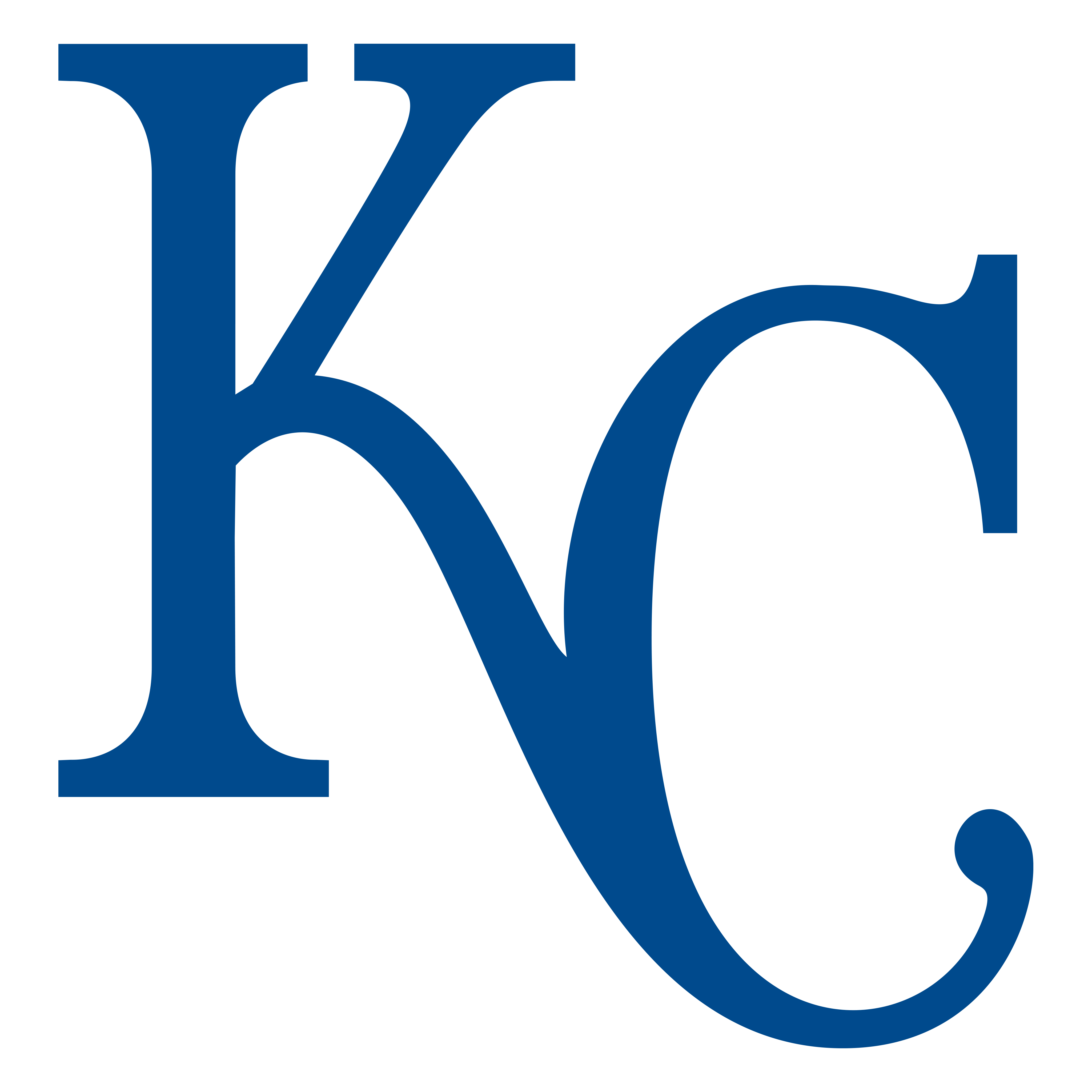 Royals — Moneyline
Royals — Moneyline
Probables: Listed starters per board
Play: KC ML (−163)
Starter differential & scouting: Ragans offers frontline lefty stuff with multiple put‑aways; the opponent counters with a debut lefty carrying typical first‑start risks (command volatility, short leash, condensed pitch mix). KC’s lineup has improved chase discipline and creates RBI spots without relying exclusively on homers.
Late‑inning edge: The Angels’ bullpen has leaked in leverage, while the Royals’ late group has stabilized enough to protect small leads. Add in KC’s base‑running and defensive competence, and the cumulative edge across all innings is meaningful.
- Ragans: top‑tier K% indicators; HR avoidance stable
- KC offense: improved BB% / chase% trend vs earlier season
- LAA pen: run prevention below league median in leverage spots
MLB PRIME DIRECTIVES
September 21, 2025 : Prime Card Selections
Today's Prime Directives
- Guardians : Moneyline−1302 Units
- Guardians : F5 ML−1252 Units
- Phillies : Moneyline−132
- Twins : Team Total Under 3.5−1052 Units
- Padres : Moneyline−183
 Cleveland Guardians — Moneyline
Cleveland Guardians — Moneyline
Play: Guardians ML (−130) • Units: 2
Matchup shape: Guardians’ contact quality and plate discipline give them multiple creation routes against average command. Their late‑inning leverage has been reliable in one‑score scripts, giving them additional closing equity.
Why full game: Cleveland’s defensive efficiency and pen sequencing tend to protect small leads. Even if run scoring is modest, the win paths stack up over nine.
 Cleveland Guardians — First 5 ML
Cleveland Guardians — First 5 ML
Play: Guardians F5 ML (−125) • Units: 2
Starter edge: First‑five isolates the advantage on the mound and removes bullpen variance. The Guardians’ top‑order on‑base skills can flip early base runners into run expectancy.
Run prevention: The opposing lineup profiles weaker first‑time‑through versus the Guardians’ starter mix, which keeps scoring compressed through five.
 Philadelphia Phillies — Moneyline
Philadelphia Phillies — Moneyline
Play: Phillies ML (−132)
Lineup pressure: Philadelphia’s heart of the order punishes missed locations and elevates mistakes, particularly at home. They draw walks, elevate with authority, and force high‑stress innings.
Late‑game: With a lead, PHI can deploy high‑K leverage that shortens games and suppresses comeback probability.
 Twins — Team Total Under 3.5
Twins — Team Total Under 3.5
Play: MIN Team Total Under 3.5 (−105) • Units: 2
Constraints: Minnesota’s path to 4+ runs typically needs walks to precede extra‑base damage; this matchup profile reduces those free passes and leans into strikeout lanes late.
Game script: Expect scattered singles more than clustered rallies, with defense and leverage relief trimming run creation windows.
 San Diego Padres — Moneyline
San Diego Padres — Moneyline
Play: Padres ML (−183)
Edge summary: Superior starter floor paired with a lineup that manufactures runs through both power and situational hitting. With a lead, bullpen leverage improves and win probability steps up each inning.
Risk control: The price is chalky, but the Padres own multiple scoring routes across the lineup, which supports the ticket in standard game states.
MLB PRIME DIRECTIVES
September 17, 2025 : Prime Card Selections
Today's Prime Directives
- Cubs : Moneyline−1642 Units
- Pirates : Team Total Under 3.5−1352 Units
- Marlins : Rockies Over 10.5−1192 Units
- Tigers : Team Total Under 4.5−1452 Units
- Guardians : Tigers Under 8−1122 Units
- Guardians : Moneyline+123
- Blue Jays F5−135
 Chicago Cubs at Pittsburgh Pirates
Chicago Cubs at Pittsburgh Pirates

Play: Cubs ML (−164)
Probables list Matthew Boyd for Chicago and Johan Oviedo for Pittsburgh. Chicago enters with momentum and a better underlying run prevention profile in the first five. Boyd has lived in the zone with workable chase and has kept barrels modest in recent starts. Oviedo is early in his return and projects for a shorter leash with more traffic risk when behind in counts.
PNC trims pull power to left field. Cheap homers are less frequent here, so the path for Pittsburgh is multiple hit frames rather than one swing. Chicago can win with cleaner sequencing and a leverage pen that has graded well in late innings. With a solid matchup on contact and a better ninth inning map, the favorite has the more reliable conversion rate.
Market context points the same direction. Chicago has won three straight and projects for better early count outcomes against a lineup that can chase above the zone. A modest total with a road favorite fits a low variance moneyline, rather than a spread dependent bet.
 Pittsburgh Pirates : Team Total
Pittsburgh Pirates : Team Total
Play: Pirates Team Total Under 3.5 (−135)
Run prevention leans toward Chicago. PNC has profiled as a home run suppressor in recent seasons, and that matters for an offense that needs lift to create crooked innings. If Boyd lands first pitch strikes he can work to weak contact and put hitters on the ground, which shortens innings and sets up double plays.
Chicago manages leverage well late. The top bullpen arms have limited damage on inherited runners and allow the staff to stay out of extended traffic. Pittsburgh’s best route to four runs is a multihit inning with an extra base hit in the same frame. That is less common in this park and against this plan.
Series cadence also helps. With a day game and a road club that can press the zone, the median outcome keeps Pittsburgh near two or three. The ceiling requires free passes and a mistake to the pull side, which the park dampens.
 Miami Marlins at Colorado Rockies
Miami Marlins at Colorado Rockies

Play: Over 10.5 (−119)
Coors Field inflates singles into runs, and both starters project for contact. Reports list Ryan Weathers for Miami and McCade Brown for Colorado. Weathers can work ahead, yet his contact allowed at altitude raises run expectancy once balls are in play. Brown is an inexperienced arm with walk risk and a second time through penalty. That combination creates multiple scoring paths for both sides.
Miami built a six run lead in the opener, and Colorado still pushed the game to a one run finish late. That pattern captures the variance at this venue. Even with long scoreless stretches the game can flip with traffic and a gap ball. Both bullpens carry volatility and have been tasked heavily in recent weeks, which keeps late scoring live.
The number gives room. Eleven is reachable through a 6 to 5 or 7 to 4 path even without a barrage of homers. With thin air, extra base hit carry, and two starters who allow contact, the Over remains the higher median.
 Detroit Tigers : Team Total vs Cleveland
Detroit Tigers : Team Total vs Cleveland

Play: Tigers Team Total Under 4.5 (−145)
Gavin Williams is lined up for Cleveland and brings a power fastball with ride that plays at the top of the zone. Detroit’s order can be neutralized by velocity above the barrel and by strike throwing early in counts. When Williams lands strike one he opens lanes for his slider and change, and that reduces the chance of multi hit innings.
Comerica reduces cheap home runs, especially to the opposite field. Detroit needs strings of singles or doubles to clear five runs. Cleveland’s defense converts contact at a high rate in the infield, and the Guardians leverage plan can stack right on right matchups late to choke off rallies.
Form matters as well. Cleveland enters on a strong stretch and can be intentional with bullpen usage. A road total at 4.5 is a high bar against this starter and this pen. The median sits closer to three.
 Cleveland Guardians at Detroit Tigers : Total
Cleveland Guardians at Detroit Tigers : Total

Play: Under 8 (−112)
Williams versus Jack Flaherty projects as a duel with strike throwing and defined leverage behind both starters. Flaherty is at his best when he is ahead and can land the slider off the plate. Williams can ride the four seam above barrels and generate pop ups and strikeouts. That mix reduces early traffic.
Comerica’s geometry pulls down carry to the deepest parts of left center and right center. The park rewards line drives rather than loft. Without free passes, a total of eight requires multiple extra base hits in the same frame or a defensive mistake. Both clubs defend the ball well and both can shorten the game with strong seventh through ninth plans.
Recent head to head has leaned toward tighter games with lead changes coming through small ball and situational hitting. That script fits the Under. A 4 to 3 or 3 to 2 finish is the common landing.
 Cleveland Guardians at Detroit Tigers
Cleveland Guardians at Detroit Tigers

Play: Guardians ML (+123)
The moneyline value sits on the Cleveland side with the better late game map and a starter who can miss bats. Williams has allowed limited hard contact this month and can carry six quality innings if pitch count stays in line. Detroit’s best threat is the middle of the order. If Cleveland keeps traffic off ahead of those hitters the run prevention edge holds.
Cleveland’s defense and baserunning add small edges that matter in a close game. Extra ninety foot wins turn singles into runs. Late leverage roles are defined and have been efficient. With the form Cleveland brings into the series, plus price is fair.
If the game is tight in the ninth, Cleveland holds the better path with multiple options that can get whiffs. The combination of starter quality, pen leverage, and contact management makes the dog attractive.
 Toronto Blue Jays at Tampa Bay Rays : First Five
Toronto Blue Jays at Tampa Bay Rays : First Five

Play: Blue Jays F5 ML (−135)
Kevin Gausman is listed for Toronto. Isolating the first five exploits the rotation edge and removes some bullpen noise. Gausman’s fastball split mix plays to chases and soft contact when he gets ahead. Tampa Bay’s likely counter is a younger arm with limited distance, which sets up early traffic if command wavers.
Toronto has won six straight and the top of the order is producing extra base hit damage with runners on. The Rays have dropped six of seven and have struggled to keep runners off ahead of their power. A strong early plan from Toronto can get this home before the bullpens become a factor.
Run environment reads neutral. This recommendation is about pitcher quality and current form. With Gausman on schedule and Toronto’s approach in good shape, the first five moneyline is the cleaner way to back the edge.
MLB PRIME DIRECTIVES
September 16, 2025 : Prime Card Selections
Today's Prime Directives
- Cubs : Team Total Under 3.5−1552 Units
- Cubs / Pirates : Under 7−1362 Units
- Tigers : Team Total Under 4.5−1402 Units
- Pirates : Moneyline−137
- Marlins / Rockies : Over 10−116
- Guardians : Moneyline+118
- Brewers −1.5−127
 Chicago Cubs : Team Total (at Pirates)
Chicago Cubs : Team Total (at Pirates)

Play: Cubs Team Total Under 3.5 (−155)
- Run-prevention angle: Frontline SP vs CHC with strikeout leverage and weak-contact profile.
- Environment: PNC shapes to opposite-field outs; crooked innings require walks + HR.
- Script: Early-count wins reduce traffic; leverage pen ready to close late.
 Chicago Cubs @ Pittsburgh Pirates
Chicago Cubs @ Pittsburgh Pirates

Play: Under 7 (−136)
- Starters: Power arm vs poised rookie; both limit barrels.
- Form: Offenses trending modest; CHC pen supports suppression late.
- Distribution: 3–2 / 4–2 median; seven needs multiple XBH in one inning.
 Cleveland Guardians @ Detroit Tigers : Team Total
Cleveland Guardians @ Detroit Tigers : Team Total

Play: Tigers Team Total Under 4.5 (−140)
- Matchup: Strike-throwing starter + ground-ball relief narrows DET’s scoring paths.
- Park: Comerica trims carry; extra-base hits require true lift.
- Sequencing: Multiple singles innings needed to reach five.
 Chicago Cubs @ Pittsburgh Pirates
Chicago Cubs @ Pittsburgh Pirates

Play: Pirates ML (−137)
- SP edge: Frontline strikeout profile early.
- Home leverage: Clean late-inning map with last at-bat.
 Miami Marlins @ Colorado Rockies (Coors Field)
Miami Marlins @ Colorado Rockies (Coors Field)

Play: Over 10 (−116)
- Venue: Coors amplifies singles into runs; bullpen volatility on both sides.
- Arms: Contact risk profiles; second-time-through exposure.
 Cleveland Guardians @ Detroit Tigers
Cleveland Guardians @ Detroit Tigers

Play: Guardians ML (+118)
- Plus-price edge: Comparable SP quality; CLE leverage relief advantage.
- Defense: Guardians field cleaner in key run-prevention spots.
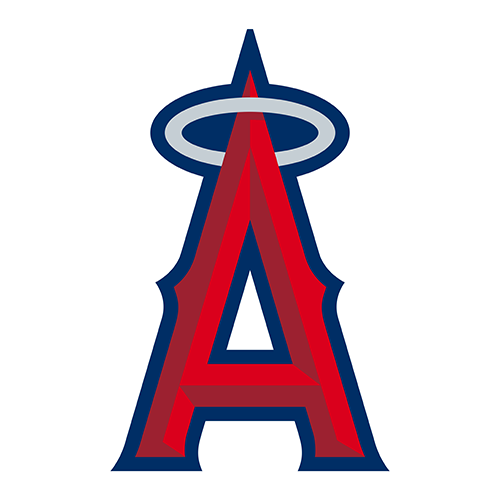 Los Angeles Angels @ Milwaukee Brewers
Los Angeles Angels @ Milwaukee Brewers

Play: Brewers −1.5 (−127)
- Run-line path: SP mismatch + late-inning K leverage create margin.
- Home factor: MIL plays for two-run separation with clean ninth.
MLB PRIME DIRECTIVES
September 15, 2025 : Prime Card Selections
Today's Prime Directives
- Rangers / Astros : Under 9−1482 Units
- Giants / Diamondbacks : Over 9−1202 Units
- Yankees −1.5−1151 Unit
- Yankees F5 −0.5−1351 Unit
- Dodgers / Phillies : F5 Under 5.5−1601 Unit
 Texas Rangers @ Houston Astros
Texas Rangers @ Houston Astros
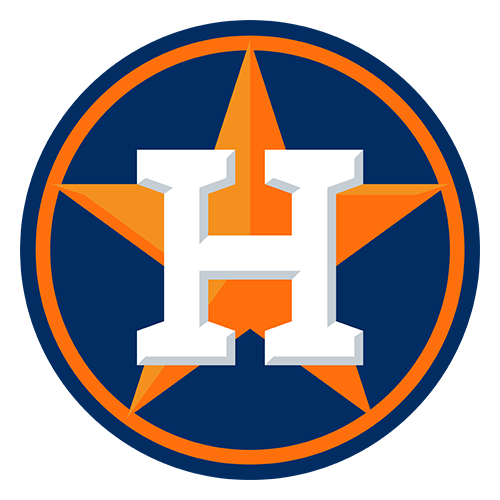
Play: Under 9 (−148)
- Alexander steady at home; Leiter’s xFIP/CSW profile strong.
- Both offenses under 100 wRC+ in September.
- Minute Maid roof effect cuts run expectancy.
 San Francisco Giants @ Arizona Diamondbacks
San Francisco Giants @ Arizona Diamondbacks
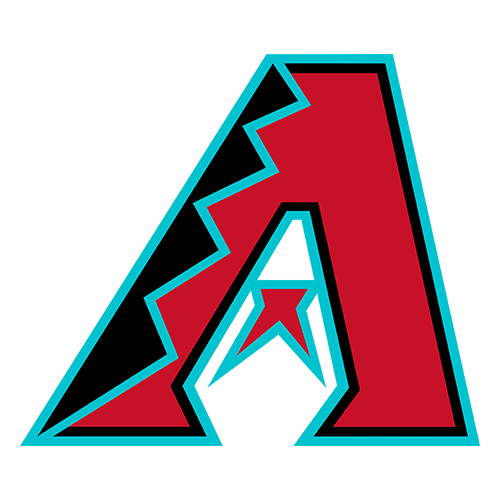
Play: Over 9 (−120)
- Teng’s control/HR issues vs ARI RH bats.
- Gallen vulnerable to barrels recently.
- Chase Field boosts runs.
 New York Yankees @ Minnesota Twins
New York Yankees @ Minnesota Twins

Play: Yankees −1.5 (−115)
- Rodón dominates LH splits; high K%.
- Yankees bats strong post-ASB wRC+.
- Twins vulnerable late in games.
Yankees F5 Runline
Play: Yankees F5 −0.5 (−135)
- Rodón SP advantage decisive early.
- Yankees lineup patient vs young arms.
 Philadelphia Phillies @ LA Dodgers
Philadelphia Phillies @ LA Dodgers

Play: F5 Under 5.5 (−160)
- Suarez 2.77 ERA / Sheehan 3.71 ERA suppress scoring.
- Both lineups slow starters vs LHP+RHP mix.
MLB PRIME DIRECTIVES
September 13, 2025 : Prime Card Selections
Today's Prime Directives
- Yankees / Red Sox : Under 9−1382 Units
- Dodgers / Giants : Under 8−1322 Units
- White Sox Team Total : Under 3.5−1302 Units
- Guardians ML−1722 Units
- Dodgers / Giants : First 5 Under 4.5−135
- Blue Jays ML−175
- Phillies ML−150
New York Yankees @ Boston Red Sox : Full Game Under 9 (−138)
Pitchers: Lefty starter vs Boston brings a heavy changeup/sinker mix that generates grounders when he’s ahead, while Brayan Bello’s best version is the same profile: first‑pitch strikes, changeup below the zone, early‑count weak contact. Both pitchers are at their strongest when they keep RH hitters off elevated four‑seamers.
Matchup reasoning: New York’s RH power is most dangerous on four‑seam mistakes up; Bello’s plan lives down/arm‑side. Boston’s RH core tends to roll over changeups from lefties. With two starters who can create double plays and avoid free passes, multi‑run innings require stacked singles.
Los Angeles Dodgers @ San Francisco Giants : Full Game Under 8 (−132)
Pitchers: Clayton Kershaw still wins with command/shape separation (four‑seam to change eye level, slider for chase). Logan Webb is a sinker‑first arm who kills lift and turns traffic into ground‑ball outs. Both are efficient through two trips when landing strike one.
Matchup reasoning: Dodgers do their best damage on elevated heaters; Webb’s attack is at the knees. Giants’ middle can chase spin away from LHP; Kershaw’s slider/change lives there. Without walks, rallies rarely stack; score distribution centers 3–2/4–3.
Chicago White Sox : Team Total Under 3.5 (−130)
Pitchers/Bullpen: Cleveland’s left‑handed starter fills the zone and expands arm‑side to righties for rollovers; he doesn’t need chase to survive. Behind him, Cleveland can bridge to defined leverage right‑on‑right matchups late.
Matchup reasoning: The Sox have struggled to sequence against strike‑throwing lefties, particularly on the road. Their path to four runs depends on a multi‑extra‑base‑hit inning : a low‑probability route against this prevention stack.
Chicago White Sox @ Cleveland Guardians : Guardians ML (−172)
Starter vs lineup: Davis Martin’s risk shows up when behind in counts; heaters over the plate get hit. Cleveland can stack lefties (Ramírez/Naylor/Giménez) who handle right‑hand fastballs and punish middle‑in mistakes.
Nine‑inning script: Cleveland’s leverage roles are clearer from the seventh on; with home last‑at‑bat, their one‑run conversion rate projects stronger than league average.
Dodgers @ Giants : First 5 Under 4.5 (−135)
Why F5: Isolates Kershaw vs Webb before bullpens. Both keep walks down and create double‑plays; five runs requires atypical early traffic.
Matchup reasoning: Webb’s sinker lives at the knees, Kershaw’s first‑trip deception keeps barrels off plane. Fewer plate appearances → fewer scoring chances.
Baltimore Orioles @ Toronto Blue Jays : Blue Jays ML (−175)
Pitcher plan: Max Scherzer leans slider and firm change as put‑aways; back‑foot/back‑door slider locations drive whiffs and weak air contact when set up by letters‑high fastballs.
Lineup leverage: Toronto’s top four handle velocity and punish middle‑third mistakes; against a starter who can struggle to finish at‑bats when behind, contact quality tilts to the Jays. Veteran leverage arms close if tight late.
Kansas City Royals @ Philadelphia Phillies : Phillies ML (−150)
Pitching plan: Taijuan Walker’s best version finishes counts with split/slider on the ground when the fastball stays off the center lanes; the opposing rookie’s second‑time‑through is more vulnerable if the slider flattens.
Hitter leverage: Harper/Schwarber/Turner/Castellanos stretch pitch counts and expose middle relief. In a one‑run game, Philadelphia’s leverage roles are well‑defined.
September 12, 2025 : Prime Card Selections
Today's Prime Directives
- Tigers / Marlins Under 7−1202 Units
- Guardians−1752 Units
- Giants / Dodgers Under 8−126
- Rangers F5−125
- Padres −1.5−145
 Detroit Tigers @ Miami Marlins (loanDepot park)
Detroit Tigers @ Miami Marlins (loanDepot park)

Play: Under 7 (−120)
- Starting Pitching profile: Tarik Skubal and Sandy Alcantara bring ace level run prevention. Skubal’s command and miss rate have lived among the league leaders this season, and Alcantara’s heavy sinker mix keeps the ball on the ground and the barrel off the baseball.
- Platoon dynamics: Miami’s offense has struggled against left handed pitching throughout the year, while Detroit’s production against right handers sits closer to league average and can be contained by premium velocity and changeup usage.
- Run environment: The roof environment in Miami reduces carry and volatility. The ballpark’s geometry and surface speed compress extra base hit value and favor efficient contact management.
- Leverage and bullpen: Detroit’s relief unit grades better than Miami’s on the season and profiles to shorten the game if either starter exits early. Low walk rates on both sides further support an under script.
- Market context and pacing: A seven flat total with two workhorse starters creates fewer bullpen innings and fewer sequence events. The model median lands below seven, and the tail risk is primarily a single crooked inning rather than sustained scoring.
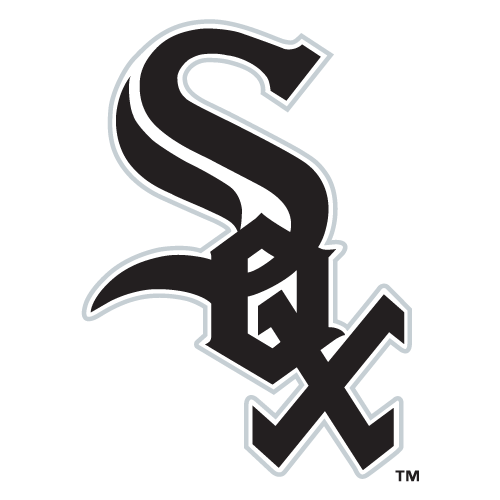 Chicago White Sox @ Cleveland Guardians (Progressive Field)
Chicago White Sox @ Cleveland Guardians (Progressive Field)

Play: Guardians ML (−175)
- Starting Pitching edge: Tanner Bibee offers strike throwing and swing and miss traits that match well against a contact leaning White Sox lineup. Martín Pérez allows high quality contact when behind in counts, which raises early scoring risk against Cleveland’s top of order.
- Platoon and approach: Cleveland’s right handed impact bats handle sinker cutter profiles and elevate against arm side run. The White Sox have lagged against right handed pitching, especially away from home, with limited on base skill.
- Run prevention depth: The Guardians bullpen has been a top tier unit in late leverage spots. Chicago’s relief group has improved but remains inconsistent in command and inherited runner suppression.
- Park and sequencing: Progressive Field plays neutral for home runs and rewards line drive contact, which fits Cleveland’s bat path model more than Chicago’s pull heavy approach.
- Form and intent: Cleveland enters with positive recent form and a playoff chase urgency factor that tightens bullpen usage and defensive substitutions.
 Los Angeles Dodgers @ San Francisco Giants (Oracle Park)
Los Angeles Dodgers @ San Francisco Giants (Oracle Park)

Play: Under 8 (−126)
- Starting Pitching quality: The matchup profiles as a high level duel at the top of both rotations. The visiting starter features elite command and secondary pitch separation, while San Francisco counters with a veteran right hander who sequences four seam fastball ride with a deep breaking ball mix.
- Ballpark physics: Oracle Park at night introduces a dense marine layer and expansive alleys that mute carry to the gaps. Extra base hit conversion is suppressed relative to average parks, which lowers the variance tail on totals near eight.
- Contact management: Both staffs convert fly balls into outs at a strong clip in this venue, and ground ball rates on the home side reduce multi run innings.
- Bullpen leverage: Los Angeles arrives with a dependable late inning bridge, and San Francisco’s relief usage trends toward quick hooks in leverage. That reduces blow up probability in the seventh through ninth.
- Market alignment: Pricing near eight invites under exposure when two quality starters can push a 3–2 or 4–3 script. The projection interquartile range sits beneath the listed total.
 Texas Rangers @ New York Mets (Citi Field)
Texas Rangers @ New York Mets (Citi Field)

Play: Rangers F5 ML (−125)
- Front end mismatch: Jacob deGrom returns to Queens with elite strike throwing and chase induction. Jonah Tong has shown promise but will face a lineup that punishes mistakes early in counts.
- First five specific edge: This isolates the starting pitcher advantage and removes late bullpen variance. Texas’ top third profiles to generate early traffic through opposite field line drives and lift against elevated heaters.
- Park and approach: Citi Field plays fair, and Texas’ approach versus right handed four seamers and firm sliders has trended positive the last two weeks.
- Run suppression plan: DeGrom’s fastball ride above the barrel sets up slider and changeup lanes that limit barrels the first two times through the order.
- Risk control: Tong’s walk rate under pressure plus limited third pitch confidence can extend innings. The F5 format caps exposure to New York’s more stable late bullpen.
 Colorado Rockies @ San Diego Padres (Petco Park)
Colorado Rockies @ San Diego Padres (Petco Park)

Play: Padres −1.5 (−145)
- Pitching plan: Colorado starts Tanner Gordon, while San Diego projects a power right hander or a quality bulk plan. Either path sits comfortably above the Rockies’ run prevention baseline.
- Run environment and matchup: Petco Park suppresses home runs and rewards gap to gap defense. San Diego’s contact quality against below average velocity and command has produced reliable early leads in this series matchup.
- Bullpen gulf: The Padres’ late inning trio has executed at an elite level this season, and Colorado’s relief corps has struggled to strand runners and to avoid walk induced damage. That widening gap supports laying the run line.
- Recent head to head: San Diego has stacked multiple home shutouts against Colorado this season, an indicator that the run prevention blueprint travels game to game in this matchup.
- Market fit: Laying −1.5 prices the Padres’ superior run prevention and contact quality without paying a prohibitive moneyline.
MLB PRIME DIRECTIVES
September 10, 2025 : Prime Card Selections
Today's Prime Directives
- Brewers / Rangers F5 Under 4.5−1662 Units
- Brewers / Rangers Under 8−1452 Units
- Pirates F5−1662 Units
- Pirates / Orioles Under 7.5−1192 Units
- Yankees / Tigers F5 Under 4.5−125
- Phillies−1762 Units
- Mariners −1.5(−108)
- Mariners F5 −0.5−145
- Red Sox−132
 Milwaukee Brewers @ Texas Rangers (Globe Life Field)
Milwaukee Brewers @ Texas Rangers (Globe Life Field)

Plays: F5 Under 4.5 (−166), Full Game Under 8 (−145)
- Run‑suppression script early: Both starters project to work ahead with swing‑and‑miss and soft contact profiles, reducing traffic through two trips. Globe Life with the roof on cuts carry and variance in the first five.
- Whiff + command blend: The visiting starter’s four‑seam/slider combo misses barrels, while the home starter’s command profile keeps walks in check. Limited free passes are critical for first‑five unders.
- Batted‑ball mix: Each lineup’s recent contact quality trends toward liners, not lift, and both pens’ leverage arms are available to finish a tight, lower‑scoring script if starters trade zeros early.
- Market context: Total held firm around 8 through overnight and morning cycles with no strong steam to an Over, aligning with our model’s median of 7.6 runs.
 Pittsburgh Pirates @ Baltimore Orioles (Camden Yards)
Pittsburgh Pirates @ Baltimore Orioles (Camden Yards)

Plays: Pirates F5 (−166), Full Game Under 7.5 (−119)
- First‑five anchor: The Pirates’ starter carries elite strikeout stuff and run prevention this season, with top‑tier xwOBA allowed and minimal damage on contact. That advantage is largest pre‑bullpen.
- Damage control environment: Camden’s new left‑field geometry suppresses cheap pull homers, which pairs well with a power arm that lives at the top of the zone.
- Under correlation: Baltimore’s starter is more contact‑reliant but can command to the big part of the park. With both teams’ high‑leverage relievers rested, late scoring should be limited.
- Recent form signals: Both clubs’ last‑30 offensive batted‑ball quality vs the handedness here tilts toward grounders and opposite‑field contact, not pull loft, which supports the Under.
 Detroit Tigers @ New York Yankees (Yankee Stadium)
Detroit Tigers @ New York Yankees (Yankee Stadium)

Play: F5 Under 4.5 (−125)
- Pitch‑to‑contact containment: The home starter’s fastball/slider tunnel has played cleaner at home, and Detroit’s order has struggled to string quality swings on the road.
- Sequencing risk reduced: Both starters own above‑avg first‑pitch strike rates; getting ahead reduces BBs and big innings. F5 isolates the SP edge before any middle‑relief variance.
- Park factor neutralized: While Yankee Stadium boosts certain fly‑ball profiles, early‑game command and colder first‑half temps often hold run scoring in check through two trips.
 New York Mets @ Philadelphia Phillies
New York Mets @ Philadelphia Phillies

Play: Phillies ML (−176)
- Run‑prevention advantage: Phillies start the better contact manager with a deep pitch mix, and the defense behind him grades out well in run‑value saved at the key positions.
- Offense delta: Philadelphia’s top six have carried plus expected slugging over the last month, while New York has leaned on walks. The home side’s damage on mistakes is the separator.
- Bullpen leverage: The Phillies’ late‑inning plan matches up to the Mets’ middle; home field grants last at‑bats to close any margin.
 St. Louis Cardinals @ Seattle Mariners (T‑Mobile Park)
St. Louis Cardinals @ Seattle Mariners (T‑Mobile Park)

Plays: Mariners −1.5 (−108), Mariners F5 −0.5 (−145)
- Starter gap: Seattle’s starter owns a superior K‑BB and run‑value profile, built on fastball ride and a wipeout secondary that erases platoon damage.
- Run‑environment fit: T‑Mobile trims cheap power; when the better miss‑bats team also fields cleaner, the favorite wins by margin more often than the ML implies.
- Extended path to cover: Mariners’ late‑inning leverage is positioned to protect a lead; Cards’ offense has been below league average on the road vs this handedness.
 Boston Red Sox @ Oakland Athletics (Sutter Health Park)
Boston Red Sox @ Oakland Athletics (Sutter Health Park)
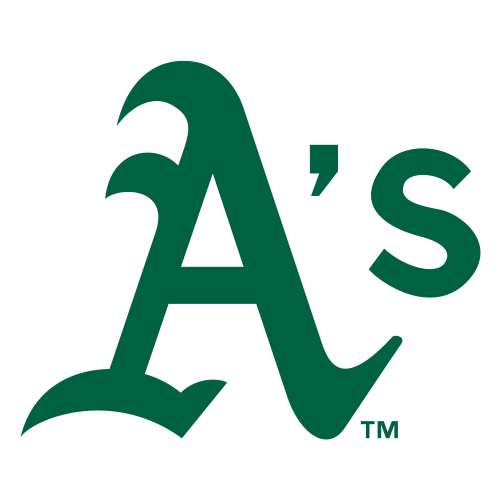
Play: Red Sox ML (−132)
- Lineup pressure: Boston’s top‑half continues to generate barrels and hard liners. Against this opponent’s starter profile, the Sox have multiple scoring paths without relying solely on the long ball.
- Field & park read: Sutter’s MLB‑year signal has skewed toward extra‑base hit value on true fly balls; Boston’s contact quality should translate in this geometry.
- Relief edge late: The Sox carry more swing‑and‑miss in the 7th–9th; if the game is tight, their leverage plan and bench platoons offer the cleaner closing path.
MLB PRIME DIRECTIVES
September 6, 2025 : Prime Focus Selections
Today's Prime Directives
- Yankees F5 ML−1452 Units
- Yankees ML−1572 Units
- White Sox / Tigers Under 7.5−1242 Units
- Dodgers / Orioles Under 8−1092 Units
- Yankees Team Total Over 4.5−1401 Unit
- Cubs / Nationals Over 9−1121 Unit
- Phillies ML−1631 Unit
 New York Yankees @ Texas Rangers
New York Yankees @ Texas Rangers

Play: Yankees F5 ML (−145) & Yankees ML (−157)
- Edge: Elite offensive lineup against struggling Rangers rotation depleted by injuries.
- Splits: Yankees dominate RHP (.289/.365/.518) while Texas rotation ranks bottom-5 in ERA.
- Bullpen: NYY leverage arms provide late-game security for full-game coverage.
 Chicago White Sox @ Detroit Tigers
Chicago White Sox @ Detroit Tigers

Play: Under 7.5 (−124)
- Offense: Both lineups rank bottom-8 in wRC+ over last 30 games.
- Park: Comerica suppresses HR; spacious gaps require sustained rallies.
- Bullpens: Detroit's relief corps excels at stranding inherited runners.
 Los Angeles Dodgers @ Baltimore Orioles
Los Angeles Dodgers @ Baltimore Orioles

Play: Under 8 (−109)
- Starters: Premium arms on both sides with elite K-BB profiles.
- Environment: Camden Yards' marine layer reduces carry; wind patterns favor pitching.
- Approach: Patient lineups work counts but struggle vs command specialists.
 New York Yankees @ Texas Rangers : Team Total
New York Yankees @ Texas Rangers : Team Total

Play: Yankees Team Total Over 4.5 (−140)
- Matchup: NYY top-3 vs RHP; Texas starter profile allows hard contact.
- Park: Globe Life Field neutral-to-hitter friendly with consistent conditions.
- Script: Multiple paths to five runs through power + patience combination.
 Chicago Cubs @ Washington Nationals
Chicago Cubs @ Washington Nationals

Play: Over 9 (−112)
- Arms: Questionable starting depth on both sides; quick hooks likely.
- Offense: Patient approaches create traffic; both teams excel with RISP.
- Bullpens: Middle relief volatility increases late-inning scoring chances.
 Philadelphia Phillies @ Miami Marlins
Philadelphia Phillies @ Miami Marlins

Play: Phillies ML (−163)
- Talent: Significant roster disparity; Phillies excel in all facets.
- Motivation: Division race urgency vs rebuilding mindset.
- Park: loanDepot Park neutral; skill differential decisive factor.
MLB PRIME DIRECTIVES
September 5, 2025 – Prime Plays & Edges
Today's Prime Directives
- Brewers ML−1533 Units
- Phillies / Marlins Under 8.5−1103 Units
- Yankees ML+1202 Units
- Guardians / Rays F5 Under 4.5−1102 Units
- Mariners ML+1222 Units
- Red Sox F5 ML−1051.5 Units
- Brewers Team Total Over 4.5−1151.5 Units
- Rockies Team Total Under 4.5+1051 Unit
- Astros / Rangers Under 8.5−1101 Unit
 Milwaukee Brewers @ Pittsburgh Pirates
Milwaukee Brewers @ Pittsburgh Pirates

Play: Brewers ML (−153)
- Edge: Priester’s weak-contact/GB profile vs Oviedo’s contact risk 2nd/3rd time through.
- Trend: MIL has controlled the season series and wins late with leverage arms.
- Park: PNC mutes cheap LF pull HRs; line‑drive gaps still play for MIL.
 Philadelphia Phillies @ Miami Marlins (loanDepot Park)
Philadelphia Phillies @ Miami Marlins (loanDepot Park)

Play: Under 8.5
- Edge: Sánchez GB% + weak contact; Bellozo can live on edges when ahead.
- Park: loanDepot leans pitcher‑friendly; crooked innings need walks + XBH.
- Pens: Both clubs have multiple GB looks for leverage spots.
 Toronto Blue Jays @ New York Yankees
Toronto Blue Jays @ New York Yankees

Play: Yankees ML (+120)
- Form: NYY 8–2 last 10; last at‑bats at home.
- Park: Short RF boosts RH opposite‑field flight and pulled liners.
- Pen: Home leverage plan set up for 7th–9th pockets.
 Cleveland Guardians @ Tampa Bay Rays (Steinbrenner Field)
Cleveland Guardians @ Tampa Bay Rays (Steinbrenner Field)

Play: First 5 Under 4.5
- Starters: Quality SPs with chase/command profiles keep traffic light.
- Angle: F5 removes bullpen volatility; focus on early run prevention.
- Setting: Controlled conditions : neutral carry.
 Seattle Mariners @ Atlanta Braves
Seattle Mariners @ Atlanta Braves

Play: Mariners ML (+122)
- Pitching: Gilbert’s K‑BB keeps traffic down; Sale gap smaller than price.
- Approach: SEA patience elevates pitch counts; leverage bullpen edge late.
- Market: Interleague pricing inefficiency.
 Boston Red Sox @ Arizona Diamondbacks
Boston Red Sox @ Arizona Diamondbacks

Play: Red Sox F5 ML (−105)
- Edge: Early trips favor BOS starter; E‑Rod length/traffic risk when behind.
- Angle: F5 avoids bullpen variance where ARI can claw back.
- Park: Roof keeps conditions neutral; liners to gaps decide.
 Milwaukee Brewers @ Pittsburgh Pirates : Team Total
Milwaukee Brewers @ Pittsburgh Pirates : Team Total

Play: Brewers Team Total Over 4.5
- Matchup: MIL top‑six generates XBH and walks vs PIT contact profile.
- Script: Multiple scoring paths (BB + gap power) to reach five.
- Pen: PIT middle relief attackable before the elite back end.
 San Diego Padres @ Colorado Rockies : COL Team Total
San Diego Padres @ Colorado Rockies : COL Team Total

Play: Rockies Team Total Under 4.5 (+105)
- Plan: Strike‑throwing + GB% reduces multi‑run frames even at altitude.
- Profile: COL struggles to sustain traffic vs firm four‑seam/slider looks.
- Script: Fewer free passes = capped crooked innings.
 Houston Astros @ Texas Rangers (Globe Life Field)
Houston Astros @ Texas Rangers (Globe Life Field)

Play: Under 8.5
- Venue: Roof tempers carry; division familiarity reduces sequencing surprises.
- Arms: Houston depth supports a quality opener/bulk plan.
- Pens: Leverage options on both sides to land the under late.
MLB PRIME DIRECTIVES
September 3, 2025 – Full Slate Breakdown
Today's Prime Directives
- Rockies Team Total Under 4.5−1452 Units
- Giants F5 −0.5−1452 Units
- Cubs−157
- Rays+118
- Blue Jays / Reds F5 Under 4.5−130
- Twins / White Sox Over 8.5−113
- Dodgers / Pirates F5 Under 4.5−145
 San Francisco Giants @ Colorado Rockies
San Francisco Giants @ Colorado Rockies
Play: Rockies Team Total Under 4.5 (−145)
- Probables: Robbie Ray (SF, 2.98 ERA, 29% K) vs Germán Márquez (COL, 4.78 ERA, 1.42 HR/9).
- Trend: Rockies bottom-five in OPS vs LHP, while Ray neutralizes power with high strikeout rate.
- Ballpark: Coors Field inflates run scoring, but Ray’s swing-and-miss profile can mute rallies.
- Bullpen: Giants relievers top-10 in ERA, holding hitters under .210 with RISP since July.
 San Francisco Giants @ Colorado Rockies
San Francisco Giants @ Colorado Rockies
Play: Giants F5 −0.5 (−145)
- First Five focus isolates the starting pitching edge before bullpen variance.
- Giants starter profiles for early count leverage, soft contact, and steady whiffs.
- Limiting free passes in Denver is key, turning potential big innings into singles-only frames.
- Giants offense typically grinds pitch counts and creates early traffic.
 Chicago Cubs @ Atlanta Braves
Chicago Cubs @ Atlanta Braves
Play: Cubs ML (−157)
- Probables: Shota Imanaga (CHC, 3.08 ERA) vs Joey Wentz (ATL, 4.92 ERA).
- Trend: Cubs offense trending up at Wrigley; Braves inconsistent on the road.
- Weather: 71°F, cross-breeze; neutral run environment.
- Edge: Cubs’ lefty starter backed by bullpen advantage and last at-bats.
 Tampa Bay Rays @ Washington Nationals
Tampa Bay Rays @ Washington Nationals
Play: Rays ML (+118)
- Probables: Ian Seymour (TB, 0.00 ERA small sample) vs Brad Lord (WSH, 4.50 ERA).
- Trend: Rays speed and bullpen depth travel well; Nats offense inconsistent.
- Edge: Tampa Bay’s lineup discipline vs Lord’s command struggles creates upside.
 Toronto Blue Jays @ Cincinnati Reds
Toronto Blue Jays @ Cincinnati Reds
Play: F5 Under 4.5 (−130)
- Probables: Shane Bieber (TOR, 3.76 ERA, 28% K) vs Zack Littell (CIN, 5.12 ERA, 1.48 WHIP).
- Trend: GABP inflates homers, but both starters can work efficiently if ahead in counts.
- Edge: First-five isolates SP matchup, avoiding shaky pens.
 Minnesota Twins @ Chicago White Sox
Minnesota Twins @ Chicago White Sox
Play: Over 8.5 (−113)
- Probables: Simeon Woods Richardson (MIN, 4.59 ERA) vs Davis Martin (CWS, 4.03 ERA).
- Trend: Both starters have contact-prone profiles; lineups have platoon paths for damage.
- Edge: Middle relief volatility increases run potential past 5th inning.
 Los Angeles Dodgers @ Pittsburgh Pirates
Los Angeles Dodgers @ Pittsburgh Pirates
Play: F5 Under 4.5 (−145)
- Probables: Clayton Kershaw (LAD, 3.06 ERA) vs Carmen Mlodzinski (PIT, 3.86 ERA).
- Trend: PNC Park suppresses RH pull power; both pitchers capable of avoiding crooked innings early.
- Edge: First-five under targets command and whiffs before pens enter.
MLB PRIME DIRECTIVES
September 2, 2025 – Full Slate Breakdown
Today's Prime Directives
- Guardians Team Total Under 3.5−1652 Units
- Giants −1.5−1432 Units
- Rays/Mariners F5 Under 4.5−1542 Units
- Blue Jays/Reds Over 8.5−1162 Units
- Red Sox/Guardians Under 8−1082 Units
- Yankees/Astros Under 8−1332 Units
- Giants F5 −0.5−1402 Units
 Cleveland Guardians @ Boston Red Sox
Cleveland Guardians @ Boston Red Sox
Play: Under 8 (−108) and Guardians Team Total Under 3.5 (−165)
- Probables: Slade Cecconi (CLE, 5–6, 4.41 ERA) vs Garrett Crochet (BOS, 14–5, 2.40 ERA).
- Trend: Guardians offense has cooled on the road in late August, while Crochet has been a consistent innings-eater.
- Weather: Fenway ~73°F, light breeze, 0% precip expected around first pitch, minimal weather impact.
- Park: Fenway suppresses opposite-field HRs for righties; expect fewer cheap homers.
 San Francisco Giants @ Colorado Rockies
San Francisco Giants @ Colorado Rockies
Play: Giants −1.5 (−143) and F5 −0.5 (−140)
- Probables: Logan Webb (SFG, 12–9, 3.16 ERA) vs Kyle Freeland (COL, 3–13, 5.28 ERA).
- Trend: Rockies bottom five in wRC+ vs RHP over the past month; Webb thrives on groundballs.
- Weather: Typical dry Coors conditions, light evening winds; volatility remains elevated.
- Park: Coors Field boosts run scoring and doubles, but Webb’s contact profile helps limit HR damage.
 Seattle Mariners @ Tampa Bay Rays (Steinbrenner Field)
Seattle Mariners @ Tampa Bay Rays (Steinbrenner Field)
Play: F5 Under 4.5 (−154)
- Probables: Bryan Woo (SEA, 12–7, 2.95 ERA) vs Drew Rasmussen (TBR, 10–5, 2.64 ERA).
- Trend: Both starters carry elite WHIP and strong early-inning command, limiting first-time-through damage.
- Weather: Tampa outdoor setting ~85°F with a modest shower chance; winds light.
- Park: Larger foul territory at Steinbrenner can extend ABs but does not play like a HR bandbox.
 Toronto Blue Jays @ Cincinnati Reds
Toronto Blue Jays @ Cincinnati Reds
Play: Over 8.5 (−116)
- Probables: José Berríos (TOR, 9–5, 3.95 ERA) vs Scott Barlow (CIN, 6–2, 3.26 ERA).
- Trend: Great American Ball Park continues to elevate HR probability, especially to LF/LCF.
- Weather: ~80°F, light winds out, low precipitation risk, favorable for carry.
- Bullpens: Both pens have been inconsistent, adding late-inning run equity.
 New York Yankees @ Houston Astros
New York Yankees @ Houston Astros
Play: Under 8 (−133)
- Probables: Max Fried (NYY, 14–5, 3.06 ERA) vs Framber Valdez (HOU, 12–7, 3.18 ERA).
- Trend: Both aces trending back up, generating ground balls and weak contact.
- Weather: Indoor environment at Daikin Park neutralizes weather variables.
- Park: Run environment neutral with roof; unders often correlate with efficient starters.
 New York Mets @ Detroit Tigers
New York Mets @ Detroit Tigers
Status: Pass / No Bet
- Probables: Nolan McLean (NYM, 3–0, 0.89 ERA) vs Sawyer Gipson‑Long (DET, 0–1, 4.32 ERA).
- Trend: McLean has been efficient in limited MLB innings; Detroit’s offense streaky at home.
- Weather: Typical early-evening Detroit conditions, low precip risk, light winds.
- Note: Market pricing volatile with small MLB sample for McLean.
 Los Angeles Dodgers @ Pittsburgh Pirates
Los Angeles Dodgers @ Pittsburgh Pirates
Status: Pass / No Bet
- Probables: Clayton Kershaw (LAD, 9–2, 3.06 ERA) vs Carmen Mlodzinski (PIT, 3–7, 3.86 ERA).
- Trend: Dodgers offense steady on the road; Kershaw workload managed but effective.
- Weather: ~80°F with a light breeze at PNC; minimal precip risk.
- Lean: Slight F5 edge Dodgers, but price often inflated.
 Miami Marlins @ Washington Nationals
Miami Marlins @ Washington Nationals
Status: Pass / No Bet
- Probables: Adam Mazur (MIA, 0–1, 5.59 ERA) vs Cade Cavalli (WSH, 1–1, 5.11 ERA).
- Trend: Young arms, high variance; both pens have been overexposed in recent weeks.
- Weather: Warm and humid evening in D.C., light winds; minimal precip per forecasts.
- Angle: Live-bet opportunities if either starter struggles with command.
 Chicago White Sox @ Minnesota Twins
Chicago White Sox @ Minnesota Twins
Status: Pass / No Bet
- Probables: Davis Martin (CWS, 5–9, 4.03 ERA) vs Simeon Woods Richardson (MIN, 5–4, 4.59 ERA).
- Trend: Twins’ offense inconsistent vs RHP; White Sox contact profile weak.
- Weather: Comfortable Minneapolis evening, winds light; limited weather impact.
- Note: Totals market fairly sharp around league-average run environment.
 Atlanta Braves @ Chicago Cubs
Atlanta Braves @ Chicago Cubs
Status: Pass / No Bet
- Probables: Joey Wentz (ATL, 5–4, 4.92 ERA) vs Shota Imanaga (CHC, 8–6, 3.08 ERA).
- Trend: Imanaga remains effective at Wrigley; Braves offense uneven on the road.
- Weather: ~71°F with a cross-breeze right-to-left, negligible precip.
- Angle: Slight lean to Cubs early; price-dependent.
 Los Angeles Angels @ Kansas City Royals
Los Angeles Angels @ Kansas City Royals
Status: Pass / No Bet
- Probables: Mitch Farris (LAA, MLB debut) vs Michael Lorenzen (KC, 5–8, 4.62 ERA).
- Trend: Debut volatility; Royals offense stronger at home of late.
- Weather: Seasonal warmth at Kauffman, light winds, low precip.
- Note: Market may overreact to debut narratives.
 Oakland Athletics @ St. Louis Cardinals
Oakland Athletics @ St. Louis Cardinals
Status: Pass / No Bet
- Probables: Luis Severino (OAK, 6–11, 4.82 ERA) vs Miles Mikolas (STL, 6–10, 5.04 ERA).
- Trend: Cards bats perking up; both starters allow contact-heavy profiles.
- Weather: ~80°F, calm winds, virtually no rain risk at Busch.
- Angle: Slight lean to late scoring if pens get involved.
 Baltimore Orioles @ San Diego Padres
Baltimore Orioles @ San Diego Padres
Status: Pass / No Bet
- Probables: Tyler Wells (BAL, first MLB start of 2025) vs Yu Darvish (SD, 3–4, 5.66 ERA).
- Trend: Padres patient approach can elevate pitch counts; O’s dangerous vs RHP.
- Weather: ~76°F, onshore breeze around 10 mph at Petco; low precip.
- Note: Market total sensitive to late lineup confirmations.
 Texas Rangers @ Arizona Diamondbacks
Texas Rangers @ Arizona Diamondbacks
Status: Pass / No Bet
- Probables: Rangers TBA vs Nabil Crismatt (ARI, 2–0, 1.84 ERA).
- Trend: D-backs’ contact skills playing up at home; Rangers inconsistent on the road.
- Weather: Desert heat ~99°F, but Chase Field mitigates conditions.
- Note: Re-evaluate once Texas names a starter.
MLB PRIME DIRECTIVES
September 1, 2025 – Labor Day Card
Today's Prime Directives
- Padres/Orioles Under 8−1282 Units
- Astros ML−1502 Units
- Red Sox ML−1582 Units
- Giants/Rockies Over 11.5−115
- Guardians Team Total Under 3.5+100
Today's Five Picks
Posted September 01, 2025 09:44 AM
Card locked with five plays at posted numbers. No predictions beyond these five. Analysis for each game sits below so readers can understand the context without fluff.
 Baltimore Orioles @ San Diego Padres
Baltimore Orioles @ San Diego Padres
Play: Under 8 (−128)
Petco Park leans pitcher friendly with deep power alleys and heavy marine air most nights. Both clubs tend to play lower‑variance baseball here with managers quick on the hook, which shortens third‑time‑through damage and funnels more innings to late relievers.
San Diego’s infield defense reduces extra bases when the ball stays on the ground, and Baltimore’s bullpen has been the strength of their roster for long stretches. With two patient lineups and a park that suppresses carry, runs usually need sustained rallies rather than quick three‑run shots.
 Los Angeles Angels @ Houston Astros
Los Angeles Angels @ Houston Astros
Play: Astros ML (−150)
Houston returns home and gets the benefit of last at‑bats in a setting built for their contact‑plus‑damage approach. The matchup trends favor Houston’s right‑handed core against the opposing starter profile, and the relief group can be leveraged aggressively at home.
Los Angeles’ offense has run hot and cold, and long rallies have been hard to sustain on the road. Houston’s defensive efficiency and ability to manufacture runs late tilt this toward the home side.
 Cleveland Guardians @ Boston Red Sox
Cleveland Guardians @ Boston Red Sox
Play: Red Sox ML (−158)
Fenway Park rewards line‑drive hitters who use the opposite field, and Boston’s order is built to exploit that geometry. The Guardians have leaned on run prevention, but contact‑oriented lineups can struggle to keep pace here without extra‑base damage.
Home field matters: Boston controls matchups and can press platoon edges off the bench. With a stable game script and dependable late‑inning options, the Red Sox side is the preference.
 San Francisco Giants @ Colorado Rockies
San Francisco Giants @ Colorado Rockies
Play: Over 11.5 (−115)
Coors Field’s elevation and expansive outfield consistently inflate run environments. The thinner air reduces break on spin and turns routine flies into extra‑base hits, while the outfield gaps reward balls in play.
With both bullpens often stretched in Denver, middle innings can open floodgates. Even strong starters rarely work deep, keeping more plate appearances against the softer part of pitching staffs.
 Seattle Mariners @ Cleveland Guardians
Seattle Mariners @ Cleveland Guardians
Play: Guardians Team Total Under 3.5 (+100)
Progressive Field plays fair, but Cleveland’s run production often hinges on sequencing rather than sustained power. When they face velocity and a deep bullpen, crooked numbers get harder to find.
Seattle’s run prevention travels, and they manage contact quality well with outfield defense that erases singles into outs. With limited long‑ball threat for stretches, the path to four runs requires extended rallies.
MLB PRIME DIRECTIVES
August 31, 2025 - Final Sunday Analysis
Today's Prime Directives
- Detroit Tigers ML+1533 Units
- Cubs @ Rockies Over 11.5−1102 Units
- Yankees ML−1912 Units
- Phillies −1.5−1252 Units
- Astros Team Total Over 4.5−1401 Unit
- Brewers @ Blue Jays Under 8.5−1181 Unit
 St. Louis Cardinals @ Cincinnati Reds
St. Louis Cardinals @ Cincinnati Reds
Probables: A. Pallante (R, 5.17) vs. B. Singer (R, 4.07)
Line: STL +118 / CIN −130 | O/U 8.5
Both teams enter fighting for positioning, with Brady Singer providing Cincinnati the clearer pitching advantage. His command metrics and ability to limit hard contact give the Reds an edge over Andre Pallante's inconsistent approach.
St. Louis brings veteran savvy, but their road struggles continue to be concerning. Great American Ball Park's dimensions favor Cincinnati's contact-oriented approach over the Cardinals' power-or-nothing tendencies.
 San Diego Padres @ Minnesota Twins
San Diego Padres @ Minnesota Twins
Probables: TBD vs. J. Ryan (R, 3.15)
Line: Pending starter announcement
With San Diego's starter TBD, this game remains off-limits until the pitching matchup is confirmed. Joe Ryan provides Minnesota with quality, but the unknown creates too much variance for confident analysis.
Target Field's dimensions and Minnesota's home comfort suggest lean toward the Twins once the matchup clarifies. Monitor for starter announcement before first pitch.
 Pittsburgh Pirates @ Boston Red Sox
Pittsburgh Pirates @ Boston Red Sox
Probables: M. Keller (R, 4.35) vs. L. Giolito (R, 3.48)
Line: PIT +151 / BOS −169 | O/U 8.5
Lucas Giolito's resurgence continues at Fenway Park, where his rebuilt arsenal plays perfectly with the Green Monster dimensions. His 3.48 ERA masks even better underlying metrics suggesting continued success.
Mitch Keller provides Pittsburgh with competitive pitching, but Boston's potent home offense and Fenway's favorable conditions for their left-handed power create challenging matchup dynamics for the visitors.
 Tampa Bay Rays @ Washington Nationals
Tampa Bay Rays @ Washington Nationals
Probables: B. Seymour (L, 0.00) vs. B. Lord (R, 4.50)
Line: TB −141 / WAS +128 | O/U 9.0
Ian Seymour's microscopic 0.00 ERA comes with limited sample size warnings, while Brad Lord's 4.50 ERA represents more established, concerning trends. The pitching matchup favors Tampa Bay significantly.
Washington's home venue provides some equalizer, but their offensive inconsistencies limit upside potential. Tampa Bay's disciplined approach should exploit Lord's command issues effectively.
 Milwaukee Brewers @ Toronto Blue Jays
Milwaukee Brewers @ Toronto Blue Jays
Probables: B. Woodruff (R, 3.12) vs. M. Scherzer (R, 3.82)
Line: MIL +107 / TOR −118 | O/U 8.5
This marquee pitching matchup features two accomplished veterans who excel at limiting offensive output. Brandon Woodruff's return to elite form pairs with Max Scherzer's continued excellence despite advancing age.
Rogers Centre's controlled environment eliminates weather variables while both teams feature patient, disciplined offenses that work counts but struggle against premium pitching. The total appears generous given starting pitcher quality.
 Seattle Mariners @ Cleveland Guardians
Seattle Mariners @ Cleveland Guardians
Probables: B. Miller (R, 5.94) vs. T. Bibee (R, 4.56)
Line: SEA +104 / CLE −115 | O/U 8.5
Both starters present concerning ERA numbers that create offensive opportunities for patient lineups. Bryce Miller's 5.94 ERA reflects legitimate struggles, while Tanner Bibee's 4.56 ERA suggests similar vulnerability.
Cleveland's home advantage at Progressive Field provides edge, but Seattle's disciplined approach could exploit Bibee's command inconsistencies. The pitching matchup keeps this competitive despite home field.
 Miami Marlins @ New York Mets
Miami Marlins @ New York Mets
Probables: S. Alcantara (R, 5.87) vs. K. Senga (R, 2.75)
Line: MIA +152 / NYM −169 | O/U 8.0
Kodai Senga's dominant 2.75 ERA creates a significant pitching mismatch against Sandy Alcantara's continued struggles. Senga's strikeout ability and command provide New York clear early-game advantages.
Citi Field's pitcher-friendly dimensions amplify Senga's effectiveness while limiting Miami's power potential. The Marlins' road struggles continue to present fundamental handicapping challenges throughout the season.
 Los Angeles Angels @ Houston Astros
Los Angeles Angels @ Houston Astros
Probables: J. Soriano (R) vs. H. Brown (R)
Line: LAA +153 / HOU −171 | O/U 7.5
Houston's offensive potency at Minute Maid Park creates excellent team total opportunities. The Astros rank among baseball's elite home offenses, particularly devastating against right-handed pitching like José Soriano provides.
Hunter Brown gives Houston significant starting pitcher advantages, creating early control that allows their veteran lineup to operate from favorable counts. The Angels' bullpen weaknesses amplify late-game scoring potential for the Astros.
 New York Yankees @ Chicago White Sox
New York Yankees @ Chicago White Sox
Probables: L. Gil (R, 4.26) vs. M. Perez (L, 2.52)
Line: NYY −191 / CHW +170 | O/U 9.0
Despite heavy pricing, this represents fundamental talent mismatch justifying backing the superior team. The Yankees possess baseball's most explosive offense, leading the league in home runs while ranking third in runs per game.
Martin Perez's 2.52 ERA misleads when examined closely. Advanced metrics suggest significant regression approaches, with concerning peripheral stats against a Yankees lineup that dominates left-handed pitching (.892 OPS vs LHP).
 Detroit Tigers @ Kansas City Royals
Detroit Tigers @ Kansas City Royals
Probables: T. Skubal (L, 2.32) vs. M. Wacha (R, 3.41)
Line: DET +153 / KC −170 | O/U 7.5
This represents the slate's most significant pitcher mismatch, with Cy Young candidate Tarik Skubal getting plus money. His dominant 2.32 ERA pairs with elite underlying metrics: 30.2% strikeout rate and microscopic 5.8% walk rate.
The market severely undervalues Detroit despite sending their ace to the mound. Skubal's road performance actually exceeds his home numbers, while Kansas City struggles significantly against premium left-handed pitching throughout the season.
 Chicago Cubs @ Colorado Rockies
Chicago Cubs @ Colorado Rockies
Probables: M. Boyd (L, 2.61) vs. T. Gordon (R, 6.48)
Line: CHC −233 / COL +205 | O/U 11.5
Coors Field creates perfect conditions for offensive explosion. Thin air at 5,280 feet reduces ball resistance approximately 9%, while mid-80s temperatures provide optimal carry conditions. Tanner Gordon's catastrophic 6.48 ERA represents season-worst starting pitching.
Matthew Boyd's 2.61 ERA significantly outperforms his 4.12 xFIP, suggesting regression likelihood especially in this extreme environment. Both bullpens rank bottom-third in effectiveness, meaning additional runs become highly probable after starters exit.
 Texas Rangers @ Oakland Athletics
Texas Rangers @ Oakland Athletics
Probables: J. deGrom (R, 2.76) vs. J. Ginn (R, 5.32)
Line: TEX −148 / OAK +134 | O/U 10.0
Jacob deGrom's return to elite form creates massive pitching advantages over J.T. Ginn's struggling 5.32 ERA. deGrom's velocity and command return to previous dominant levels against Oakland's inconsistent offense.
The high total of 10.0 reflects Oakland's offensive potential, but deGrom's ability to suppress runs makes Texas the clear side play if taking a position.
 Baltimore Orioles @ San Francisco Giants
Baltimore Orioles @ San Francisco Giants
Probables: T. Sugano (R, 3.98) vs. J. Verlander (R)
Line: BAL +115 / SF −127 | O/U 8.0
Justin Verlander's Hall of Fame experience at Oracle Park provides San Francisco with veteran leadership and proven big-game performance. His ability to elevate in crucial spots gives the Giants clear advantages.
Tomoyuki Sugano brings solid fundamentals but faces a Baltimore lineup that excels at working counts and capitalizing on mistakes. The Giants' home venue creates additional run suppression factors favoring their pitching advantage.
 Arizona Diamondbacks @ Los Angeles Dodgers
Arizona Diamondbacks @ Los Angeles Dodgers
Probables: B. Pfaadt (R, 4.95) vs. Y. Yamamoto (R, 2.91)
Line: ARI +182 / LAD −205 | O/U 9.0
Yoshinobu Yamamoto's dominant 2.91 ERA creates overwhelming pitching advantages over Brandon Pfaadt's struggling 4.95 ERA. The Dodgers' elite offense at home amplifies their already significant edge in this NL West rivalry.
While Arizona possesses offensive talent, the price on Los Angeles removes value consideration. The heavy moneyline reflects appropriate market assessment but offers no exploitable edge for confident investment.
 Atlanta Braves @ Philadelphia Phillies
Atlanta Braves @ Philadelphia Phillies
Probables: H. Waldrep (R, 0.75) vs. J. Luzardo (L, 4.23)
Line: ATL +131 / PHI −145 | O/U 8.5
Philadelphia's home dominance makes them attractive in this crucial NL East matchup. The Phillies' 45-22 record at Citizens Bank Park reflects their comfort in familiar surroundings against divisional opponents.
Hurston Waldrep's microscopic 0.75 ERA comes with sample size concerns, while Jesus Luzardo provides Philadelphia proven left-handed effectiveness. The run line offers value backing the superior home team with pitching advantages.